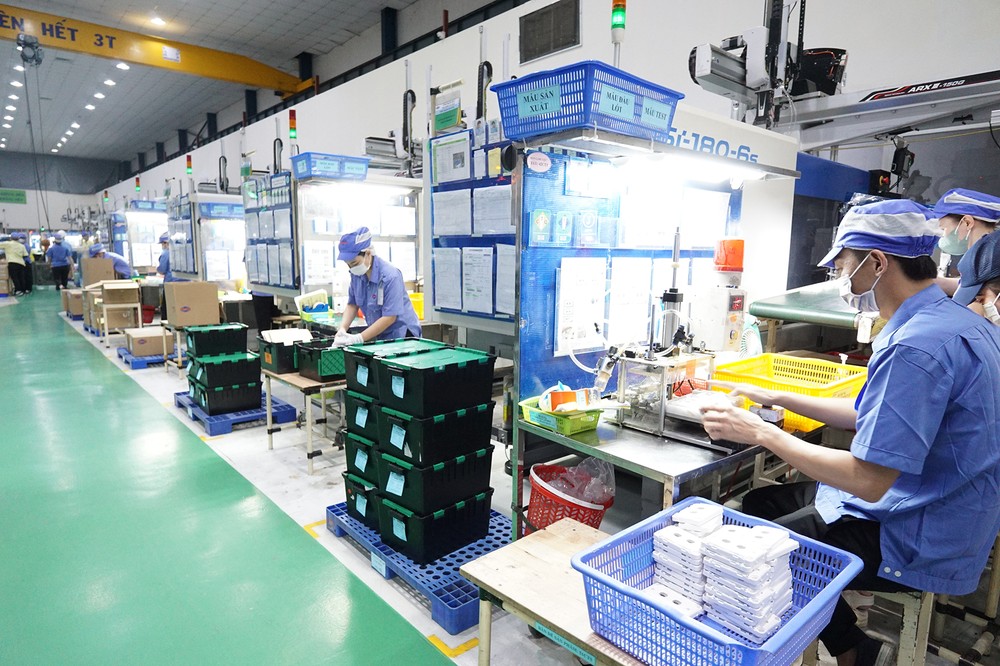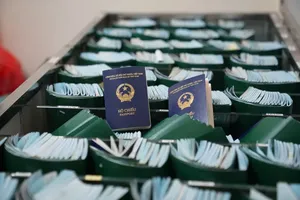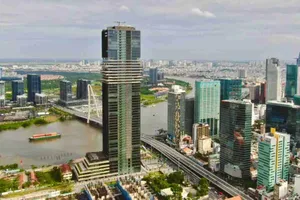
Diversifying funding sources
In response to the government's National Strategy for Green Growth for the 2021-2030 period, with a vision to 2050, commercial banks have introduced various green credit packages and preferential programs for businesses engaged in green production, green projects, and sustainable transitions.
After launching a VND4.2 trillion green credit package specifically for the textile sector’s transition to sustainability, BIDV has rolled out another green credit package worth up to VND10 trillion to support businesses investing in or expanding green projects, with preferential loan rates available until the end of 2024. VietinBank has allocated VND5 trillion through its Green UP financial program to fund projects and initiatives that benefit the community and society. Similarly, TPBank is offering a VND5 trillion credit package specifically for businesses with green projects and initiatives.
To promote green credit, many commercial banks have mobilized foreign funding sources to enhance their financing for green projects. In August, BIDV and the French Development Agency in Vietnam (AFD Vietnam) signed a credit agreement for a climate credit line worth 50 million euros, aimed at financing projects that mitigate and adapt to climate change and promote sustainable development.
Recently, SeABank has been actively expanding its international partnerships to attract foreign capital, raising nearly US$850 million from financial institutions such as IFC, DFC, AIIB, and Norfund. Ms. Le Thu Thuy, Vice Chairwoman of SeABank's Board of Directors, stated that with financial and professional support from experienced international partners, SeABank is focused on developing a green finance system to mobilize private sector funding for large-scale, long-term environmental projects.
Additionally, SeABank is the first bank to issue blue bonds (related to marine projects) and green bonds (related to environmental initiatives) for international financial organizations like IFC and AIIB, with a total value of up to $150 million. “The bonds issued for the green and blue investment portfolios have longer maturities than conventional bonds, aligning with the bank's strategy to increase stable funding in the medium and long term,” Ms. Le Thu Thuy explained.
Previously, OCB signed an agreement with IFC, under which IFC will initially disburse approximately $150 million to OCB for businesses that meet green credit standards, offering the lowest interest rates.
Greening banking operations
Besides promoting green credit, commercial banks have been striving to develop banking operations that are more sustainable and environmentally friendly. According to the action plan of the banking sector implementing the National Strategy for Green Growth until 2030, the goal is for 100 percent of banks to establish internal regulations and conduct environmental and social risk assessments in their lending activities and apply environmental standards to projects financed by banks by 2025.
In September, ACB announced its Sustainable Finance Framework, aligning with the State Bank of Vietnam's direction on green credit. According to Mr. Ngo Tan Long, Deputy General Director of ACB, the issuance of the Sustainable Finance Framework is a key objective for ACB's business strategy, aimed at developing new opportunities in the emerging green finance sector in Vietnam.
“In 2024, ACB is proactively providing a credit package of VND2 trillion for businesses in the green category, with approximately 90 percent of this amount already disbursed,” said Long. Mr. Vo Hoang Hai, Deputy General Director of Nam A Bank, noted that the bank has “greened” its credit portfolio by continuously expanding its diverse range of green credit products. Currently, green credit accounts for about 10 percent of Nam A Bank's total credit volume, with over VND12 trillion disbursed across nearly 10,000 loans. The bank aims to increase the proportion of green credit to 20-25 percent.
Mr. Nguyen Duc Lenh, Deputy Director of the State Bank of Vietnam - Ho Chi Minh City Branch, stated that more credit institutions are implementing environmental and social risk management in their lending activities, gradually aligning with international standards. In August 2024, SBV issued a decision to amend and supplement the Green Banking Development Project in Vietnam.
This initiative emphasizes that the development of green banking and green credit is not only the responsibility of commercial banks but also of all credit institutions, including non-bank entities such as financial companies, leasing firms, and people’s credit funds. This approach enhances the sense of responsibility and proactive engagement of the entire credit institution system in developing green credit and promoting sustainable economic growth.












)

)









